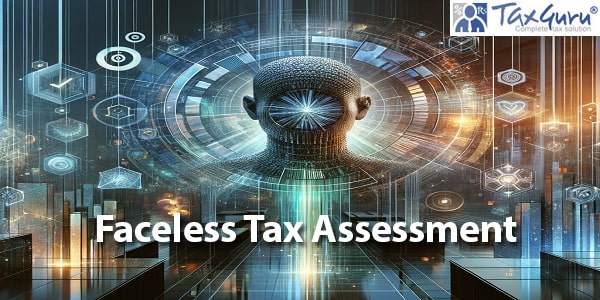Introduction: The introduction of faceless tax assessment under section 144B of the Income-tax Act, 1961, marks a significant milestone in India’s tax administration. This innovative scheme, implemented since April 1, 2021, has transformed tax assessment, penalty, and appeals processes. In response to Unstarred Question No. 382 in the Rajya Sabha, Shri S. Kalyanasundaram seeks clarification on various aspects related to faceless assessment. Let’s delve deeper into the government’s response to understand the impact, benefits, and measures taken to redress taxpayer grievances.
Detailed Analysis:
a) Tax Collection Trends:
The net direct tax collection trend over the past three financial years showcases the evolution of tax revenue before and after the introduction of faceless assessment:
- FY 2018-19: ₹11,37,718 Crores
- FY 2019-20: ₹10,50,681 Crores
- FY 2020-21*: ₹9,47,176 Crores (Relates to Covid-19 pandemic)
- FY 2021-22: ₹14,12,422 Crores
- FY 2022-23#: ₹16,63,686 Crores (Provisional)
b) Benefits of Faceless System:
The faceless system aims to enhance efficiency, transparency, and accountability in tax administration by eliminating physical interactions between tax officers and assesses. Key benefits include:
- Greater efficiency in assessment, penalty, and appeals processes.
- Transparency achieved through technology-driven interactions via dedicated e-filing portals and electronic means.
- Accountability ensured by reducing manual intervention and biases.
- Paperless and efficient proceedings with personal hearings conducted through video conferencing.
c) Redressal Measures for Taxpayer Grievances:
To address grievances arising from faceless processes, the government has established dedicated channels for complaint resolution:
- Grievances received through CPGRAMS, designated email IDs, and other communication channels.
- Dedicated team of officers responsible for handling grievances promptly and effectively.
- Regular monitoring and analysis of grievances to identify systemic issues and implement timely solutions.
- Systemic improvements introduced to minimize taxpayer grievances and enhance satisfaction.
Conclusion: The government’s response underscores the transformative impact of faceless tax assessment, highlighting increased tax collection, enhanced efficiency, and improved transparency in tax administration. By leveraging technology and implementing robust grievance redressal mechanisms, the government aims to create a taxpayer-friendly ecosystem while ensuring accountability and fairness in tax proceedings. As India embraces digitalization in tax administration, faceless assessment emerges as a cornerstone of progressive reforms, contributing to a more streamlined and responsive tax regime.
*****
GOVERNMENT OF INDIA
MINISTRY OF FINANCE
DEPARTMENT OF REVENUE
RAJYA SABHA
UNSTARRED QUESTION NO. 382
TO BE ANSWERED ON TUESDAY THE 06TH FEBRUARY, 2024/ 17 MAGHA, 1945
(SAKA)
Faceless tax assessment
- SHRI S. KALYANASUNDARAM:
Will the Minister of FINANCE be pleased to state:
(a) the amount of tax collected before and after the introduction of faceless assessment and the details thereof;
(b) the benefits of the faceless system and the details thereof; and
(c) the steps taken by Government to redress the grievances of taxpayers in faceless assessment and the details thereof?

ANSWER
MINISTER OF STATE IN THE MINISTRY OF FINANCE
(SHRI PANKAJ CHAUDHARY)
(a) By virtue of the provisions of section 144B of the Income-tax Act, 1961, the scheme of faceless assessment was introduced w.e.f. 01.04.2021. The net direct tax collection since last three financial year before the introduction of the said scheme till the financial year 2022-23, is as under:-
(Rs. in Crores)
| Financial Year | Net Direct Tax Collection |
| FY 2018-19 | 11,37,718 |
| FY 2019-20 | 10,50,681 |
| FY 2020-21* | 9,47,176 |
| FY 2021-22 | 14,12,422 |
| FY 2022-23# | 16,63,686 |
Source: Pr. CCA (CBDT)
* Relates to Covid-19 pandemic
# Provisional
(b) The Faceless System is in respect of assessment, penalty and appeals to bring greater efficiency, transparency and accountability in tax administration process. It has eliminated the physical interface between the tax officer and the assessee in the course of proceedings by leveraging technology. All communications between the taxpayer and the tax authorities take place either through a dedicated e-filing portal or electronic means, ensuring a paperless and efficient process. Personal hearing through video conferencing (VC) is an integral part of this system.
(c) Grievances pertaining to handling of faceless processes are received through various channels including CPGRAMS and designated email ids samadhan.assessment@incometax.gov.in, faceless.samadhan.penalty@incometax.gov.in, faceless.samadhan.appeals@incometax.gov.in, dak/emails etc.
The grievances are handled by a dedicated team of officers and are monitored to ensure that these are resolved in an effective and timely manner. Regular analysis of grievances is done to identify the issues and to address such issues in a time-bound and systematic manner. Systemic improvements are carried out wherever required to minimize the grievances of taxpayers.




